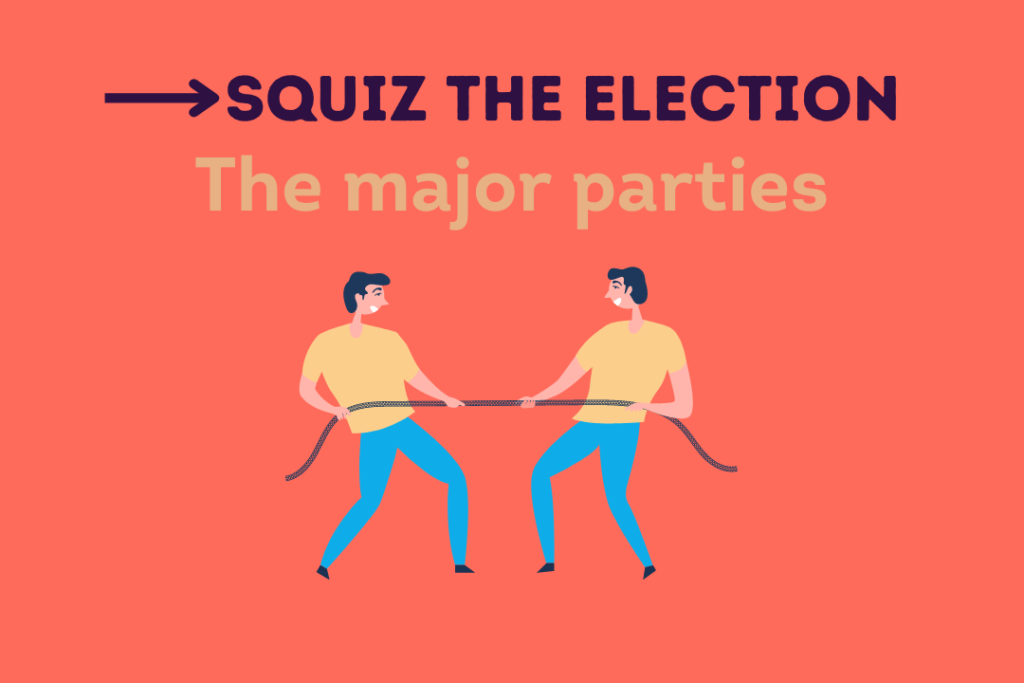Election 22 / 19 April 2022
The major parties
Let’s take a look at the parties themselves – what they stand for, and their success – or lack thereof – in the recent past.
We might as well start with the parties in government?
Gotta start somewhere… And it’s the Coalition – that’s the Liberal Party of Australia, the Nationals, the Liberal National Party (known as the LNP) in Queensland and the Country Liberal Party from the Northern Territory.
Why are they in a coalition?
Put simply, they need one another. Last election, the Coalition won 77 seats. Breaking that down, the Liberals won 44 seats, the Nationals won 10, and the LNP in Queensland won 23.
Just breakdown the LNP for me…
It does require a bit of explanation… Within the LNP result, 5 MPs consider themselves Nats, and 18 consider themselves Liberals. So when you put that lens on it, the Liberals won 62 seats in 2019, and the Nats won 15.
So how do the parties make it work?
There’s a formal arrangement between the Libs and Nats imaginatively called the Coalition Agreement. It’s made after each election and it covers things like giving the junior partner – the Nats – the deputy prime ministership (or deputy opposition leader) and a carve up of the ministries and representation in Cabinet – or shadow Cabinet if they are in opposition. It also talks about how they will field candidates at the election. But it’s not something that’s made public.
How do they work it out?
It depends on those at the table and their vision for their political organisations at the time because looking at those from the past, their visions are different, but also similar… That’s because they’re both considered to be at the conservative end of the political spectrum.
OK, hold on right there… Right, left, conservative, liberal – explain that.
The left refers to people and groups that have liberal views, and the right refers to people or groups that have conservative views.
Is it that simple?
No, because you can’t put people in neat little boxes all the time… For example, there are people in the Coalition and Labor Party who are conservative when it comes to economic issues but liberal when it comes to social issues – and there are many variations in between.
We hear about it a lot from politicians overseas – how does it work here?
Looking at Australian politics as a whole, for a long time we’ve generally been less radical – so we have fewer people in our parliaments on the far left and far right of the political spectrum than many other democracies around the world.
Ok, let’s get back on track. What do the Liberals stand for?
They promote ‘free enterprise’ and individual liberty – the idea that businesses and individuals should be free to pursue their interests and develop wealth with limited government controls. It argues that the greatest benefits will flow to all citizens if governments encourage business, restrict intervention and keep services limited to helping those in the community with most need while encouraging self-reliance.
And the Nationals?
The Nationals’ values are socially conservative and they also want to promote private enterprise. The difference with the Liberals is they advocate for government support for communities outside the major capitals, but overall the party believes that the role of government should be kept to a minimum.
And the Australian Labor Party.
Labor, or the ALP – it’s the major centre-left political party in Australia, and it’s the nation’s oldest political party.
Where did it come from?
Its roots are in the union movement, so it sprung from workers banding together to organise and represent their interests to business owners and government. Looking back, Labor was the first party to win a majority in the Australian parliament – that happened in 1910. And today, it has members and senators in federal parliament from every state and territory.
Is it still the workers’ party?
Well, Labor advocates for improved working and living conditions for the wage-earning population. Labor also believes that unregulated private enterprise tends to produce inequalities and injustices. And they argue for a more equal distribution of wealth and opportunity achieved through government economic intervention and the provision of services.
They’re also different when it comes to funding?
The major parties receive a lot of public funding. But if you’re on the Labor side, a lot of financial support comes from the trade unions via affiliation fees, special levies and donations whereas the Coalition relies on private and corporate support.
And to finish off, give me a sense of the past results for the major parties…
So let’s look back almost 20 years – that would be the 1993 election won by Paul Keating. Including that election, there have been 10 elections run…
And?
And the Coalition has won 7 of them, including the last 3.
There have been some very tight results there though…
There sure have – so nothing’s guaranteed. And here we go again…
Related News
Get the Squiz Today newsletter
It's a quick read and doesn't take itself too seriously. Get on it.

